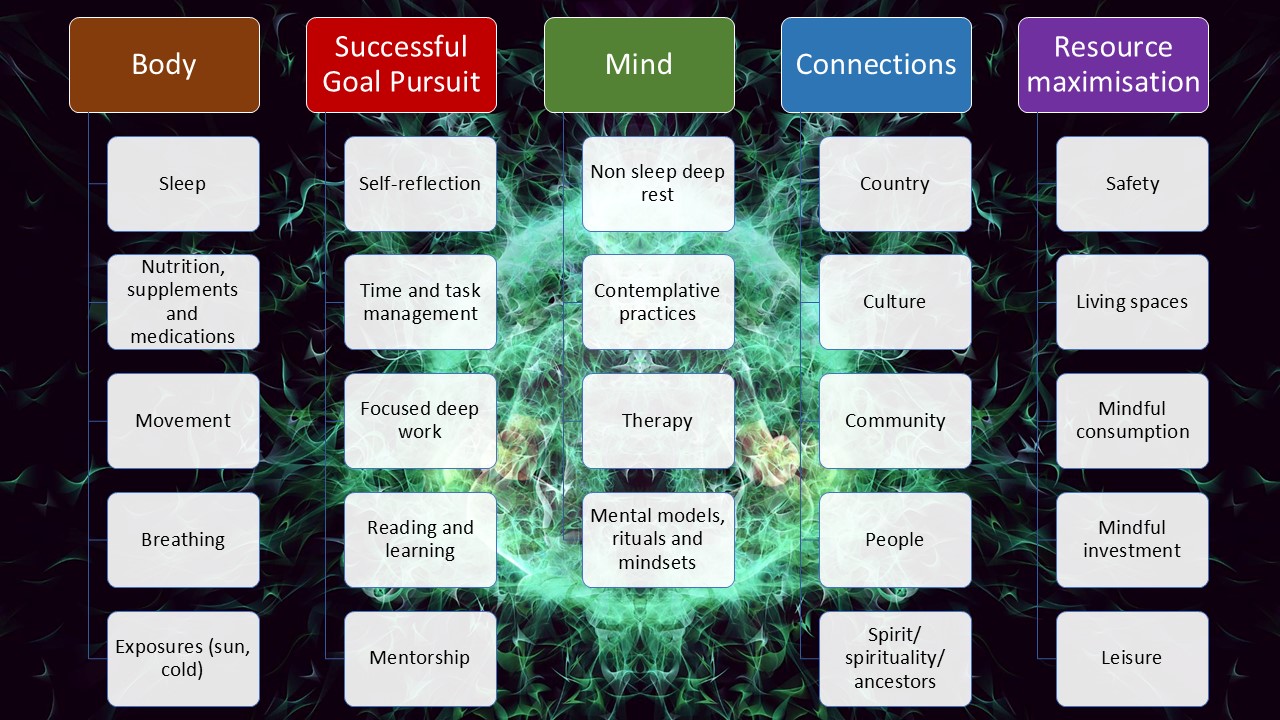
There are dozens of ways to support your mental health—and many of them are simple, everyday actions backed by science.
I hypothesise that when the average person hears “mental health,” their mind leaps to “mental illness.” It’s a common association—and an understandable one. Conversations about mental health frequently centre around treatments like therapy, medication, or (in more severe cases) hospitalisation.
But mental health is more than the absence of illness. It’s also about what helps us feel well, function effectively, and engage meaningfully with life. And the activities that support this broader idea of mental wellbeing are far more diverse than we often realise.
I was reminded of this recently while reading this article on brain health. It speaks of dreaming, having adventures, journaling and lentils – not typically the first things that come to mind when we think about “mental health support,” but all profoundly brain-beneficial.
As someone who sits with the topic of mental health on a daily basis, this isn’t new to me. When I teach about wellbeing, I often show the slide below. It’s a visual catalogue of the many self-investments that can contribute to better mental health—things like movement, deep rest, mentorship, time in nature, reading, and leisure.

What strikes me most is the sheer diversity of activities that can support a healthier mind. This isn’t just an academic observation—it’s something I hope is motivating to people. I even used this in a discussion I had with someone recently, to reinforce the many good, but unnamed mental health investments they were making.
There are many doors into this space. Many activities that are already in your life might be doing great things for your mental health. Now you can name them as such.
The result? Everyone’s mental health plan is uniquely them. Some people feel better after a good gym session. Others get the same boost from a quiet evening of reading, meaningful community involvement, or crafting a more comfortable living space. One person might focus on diet, another on spirituality or reflection.
And increasingly, there’s science to back this up.
The evidence base around low-intensity mental health interventions is growing. Many of these practices – gratitude, compassion, journaling, connection, mindfulness – are derived from or inspired by psychotherapeutic approaches. They’re now being adapted into everyday, accessible formats. Greater Good in Action is a great example of this: it offers dozens of brief, research-backed activities shown to enhance emotional wellbeing. We aren’t yet at the point where we can precisely say what specific interventions will work for specific people, but we can offer people a buffet of activities with a likelihood of success.
These activities aren’t usually one-offs. Like brushing our teeth or charging our phones, many mental health-supportive actions are best done regularly. The goal is to make them part of the rhythm of our days and weeks – investments in prevention and resilience rather than a crisis response.
And for those currently receiving professional support for mental illness? These activities aren’t in competition with treatment – they can work alongside it, reinforcing progress and helping build a more robust foundation for recovery.
The bigger message is this: mental health is woven into every part of our lives. That means there’s likely already something you’re doing, or could be doing, that helps your mind as well as your body, your relationships, and your sense of meaning.
It also means that if you’re supporting someone else’s mental health, whether as a friend, colleague, teacher, or support person, there are many ways to help. You might encourage focused work, facilitate social connection, or just make it easier for them to get rest, move their body, or find purpose.
Despite all the complexity and wordiness that can surround the topic, my message is simple:
There are lots of ways to invest in your mental health.
Some of them probably already fit who you are and how you live.
Start there.


